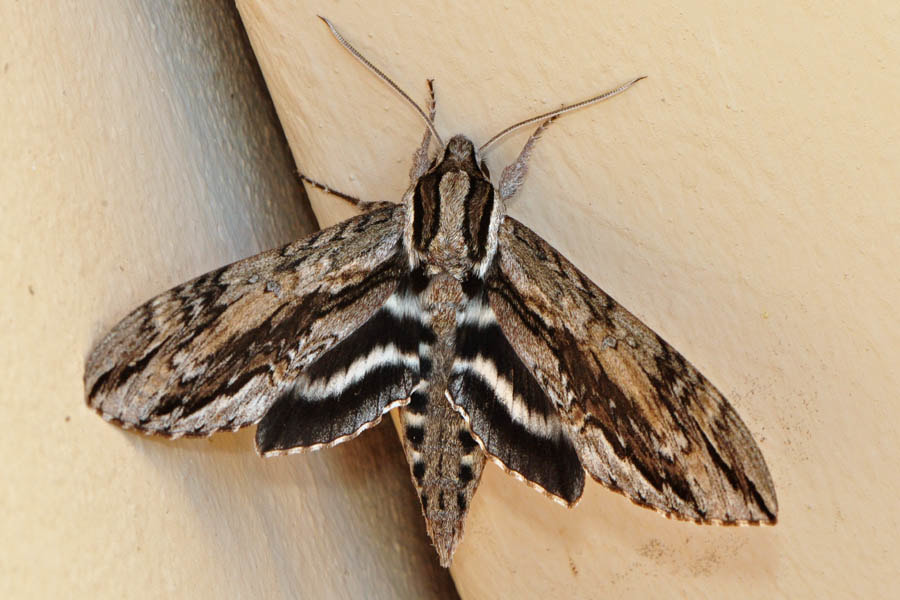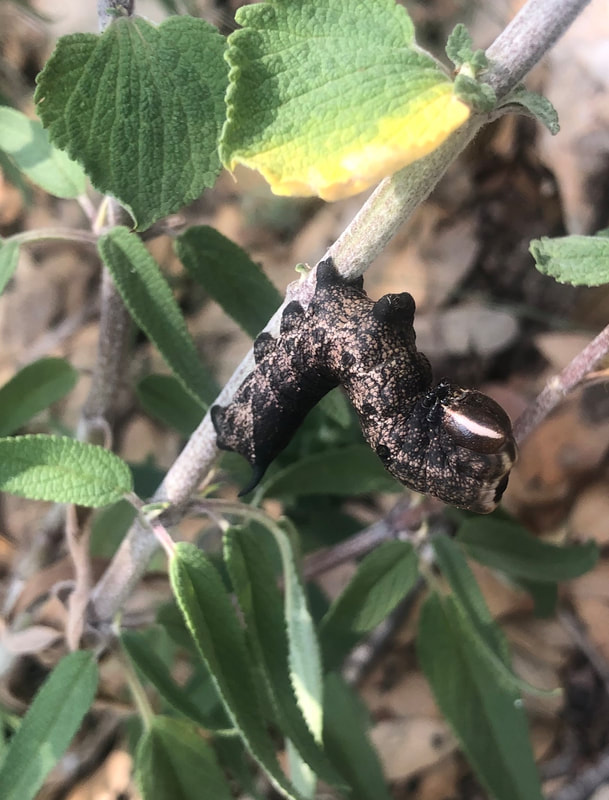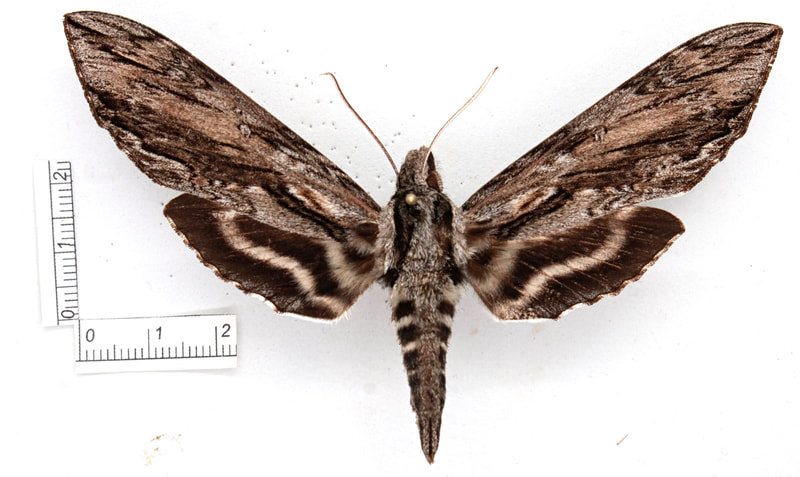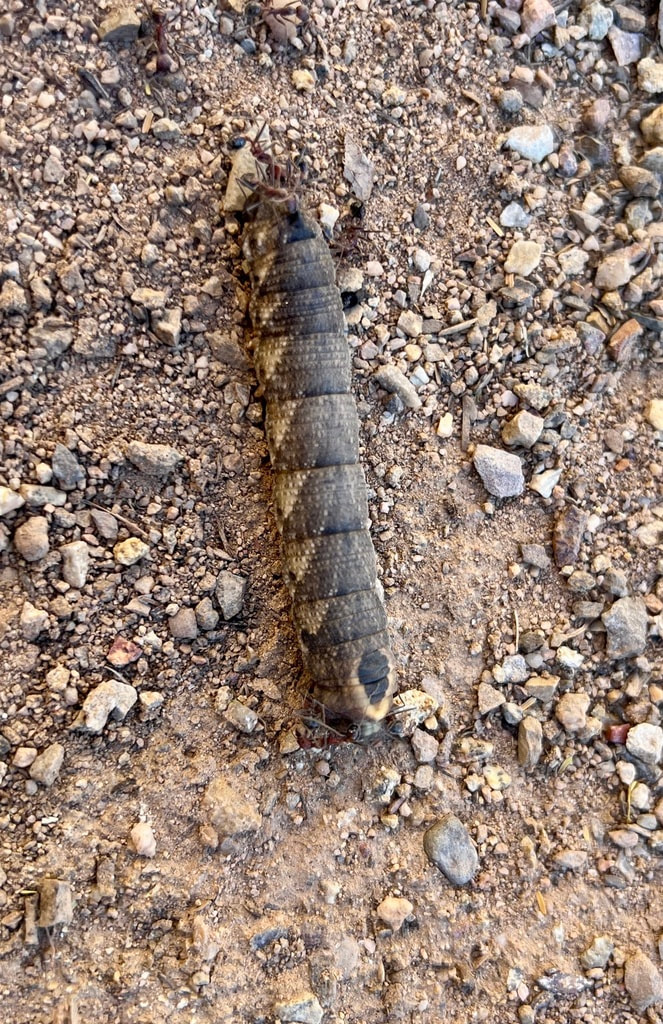|
Common Name(s): Istar Sphinx
Ecology and Life History Overview: Adults are on the wing during the monsoon season in Arizona, and almost year-round in Southern Texas. These moths are associated with plants in the Lamiaceae, particularly Salvia spp. and can be found near these plants. Larvae, like other Lintneria species, have raised thoracic segments. The larva is also fairly elongate with a stout caudal horn. Habitat and Searching for Larvae: Tuttle sites canyons, foothills, and mountains of the Southwest with elevations of 5000-8000 feet (2). Searching Salvia spp. growing in canyons is likely productive. Tuttle specifically mentions hillsides and roadside cuts as being good habitat for this species (2). The final instar larvae apparently do not feed during the day, but rather descend their hostplant and hide at the base of the plant (2). Due to the generally dark coloration of this larva, it may not glow as brightly under UV light. However, it likely does glow quite well in it’s younger instars that are more green. The final instar may glow slightly, especially around it’s raised thoracic segments. Rearing Notes: [Coming Soon] Adult description: This is the largest Lintneria species in the USA with forewings 50-62mm in length (2). The moth is striking with a thick dark line running the length of the brown-gray forewing from the basal patch to near the apex. The discal area of the wing is distinctly brown, and there may be a brownish streak above or below the black streak. There is often a small, silvery discal spot present. The hindwings, like others in the genus are black with 2 white stripes. The thorax of this moth is beautifully patterned. There is a large brownish upside-down U shape that is outlined in black. The inner part of the U (middle part of thorax) is a heather gray color. |
Larval description:
L5: The larva is dark in color, almost black in most cases with some white maculation on the sides. The caudal horn is short, stout, curved downward, and black in color. The head capsule is black in this species with two parallel white streaks. The combination of the head capsule and overall dark coloration will separate it from other western Lintneria species. The thoracic segments are raised and display a dark oval shape outlined in white. Hostplants: Click here to load this Caspio Cloud Database
Cloud Database by Caspio |
The gallery to the left contains photos of Lintneria istar adults. The data for each photo can be found by clicking on it. If you have a photo that you would like to submit to us, please contact us using the link at the bottom of the page.
The gallery to the right contains photos of Lintneria istar larval and pupal stages. The data for each photo can be found by clicking on it. If you have a photo that you would like to submit to us, please contact us using the link at the bottom of the page.
The gallery to the right contains photos of Lintneria istar larval and pupal stages. The data for each photo can be found by clicking on it. If you have a photo that you would like to submit to us, please contact us using the link at the bottom of the page.














